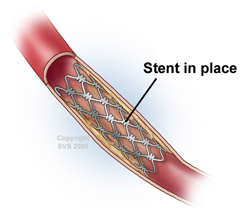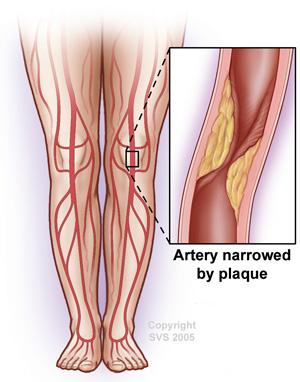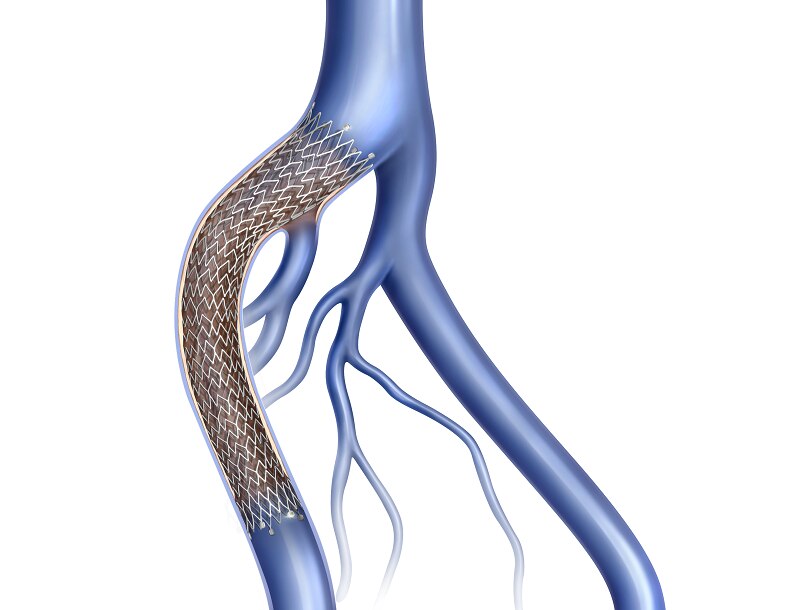Artery Stents – Vein Stents
Artery Stents
Artery stents are a method of treatment of various forms of arterial disease of the circulation. Vascular stents were first utilized in humans to treat poor circulation 35 years ago. Before this technology was invented, open vascular surgery procedures, such as bypass grafts were the only option to treat these same conditions. Vascular stents have revolutionized the field of blood vessel treatments.

A stent is a piece of circular metal that is rolled up into a shape of a tube. They come in various sizes. They are typically collapsed down into a small size in the manufacturing process so that they can be inserted into a blood vessel with the use of a thin narrow tube called a catheter. This is most typically done through a small opening made into the blood vessel with a needle and sheath. The most common type of metal utilized to manufacture these devices is nitinol. Advances in medical technology have now allowed for most stents to be coated with pharmaceutical drugs, such as heparin or paclitaxel, which can improve the long-term patency results of stents.
Stents are used to treat many forms of arterial disease. One of the most common types of arterial disease treated with stents is atherosclerosis, or hardening of the arteries. As atherosclerosis occurs within the lining of a blood vessel, it leads to the development of plaque that narrows the lining of the vessel. The plaque can be pushed to the side and the vessel re-opened by inserting the device at the site of the plaque buildup.

Other types of artery conditions that can be treated by stenting technology include artery aneurysms, arterial dissection, and traumatic injuries.
Vein Stents
Vein stents are made out of the same material that artery stents are made from. They are often of larger diameter since they are typically utilized in large sized veins only. One of the most common locations for these devices to be placed is in the iliac veins. Iliac veins are a common location for treatable venous pathology, such as May-Thurner Syndrome and deep venous thrombosis.

When utilized for the proper conditions, vein stents can have very long-term patency. Venous stenting can help diminish the risk of recurrent blood clots or DVT in certain patients.
Blood Vessel Stent Specialists
Austin Vein Specialists are experts in endovascular procedures and all forms of treatments for blood vessel diseases. Our board-certified vascular specialists have been performing vascular interventions for over 23 years. We have performed thousands of stent procedures for arterial and venous conditions. To arrange a consultation with our board-certified vascular surgeon, call (512) 964-8346.








